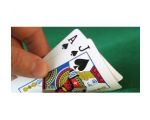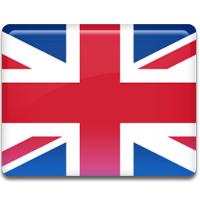
BlackJack Tips and Guideline
Millions of players be familiar with the message that relating to all the casino table games, blackjack would be the one that you'll be able to beat. A practical system for counting cards in blackjack to realize an edge within the casino is made available to people in the early 1960s. As it happened, few players ever really learned to get rid of the dealer. Furthermore, playing conditions have changed ever since then. Some tables use many deck during a period or cut a portion of the cards beyond play to ensure that a card counter never sees them.
Even though most players not have the skill to win consistently, the fact that blackjack could be beaten was enough to spark a boom amongst gamers. Blackjack is in no way the most widely used casino table game in Singapore & Malaysia and United Stated, with increased players than craps, roulette, and baccarat combined.
A wide range of people don't have either the patience, persistence, and concentration needed for card counting or perhaps the bankroll to really make it effective. But they can continue to narrow your house advantage to below 1 percent in blackjack. The secret is always to learn basic strategy for hitting, standing, doubling down, and splitting pairs. A little time spent teaching yourself to play well may make your money go a whole lot farther within the casino. In this article, you will understand the fundamentals of blackjack, in addition to some ways of increase your probability of winning. Let's get started by studying the game:
Rules
Blackjack is used one or even more standard 52-card decks, with each denomination assigned an area value. The cards 2 through 10 are worth their face value. Kings, queens, and jacks are each worth 10, and aces can be utilised as either 1 or 11. The object for that player would be to draw cards totaling nearer to 21, without exceeding, than the dealership's cards.
The best total coming from all is a two-card 21, or even a blackjack. Blackjack pays 3-2-that is certainly, a two-card 21 on the $5 bet will win $7.50 instead on the usual $5 even-money payoff on other winning hands. However, if the card dealer also incorporates a two-card 21, the hand pushes, or ties, and you get your original bet back. But if the card dealer goes on to draw in 21 in three or maybe more cards, your blackjack continues to be a winner which consists of 3-2 payoff.
The game is frequently played in an arc-shaped table with places for as much as seven players on the lateral side and for the dealership on the inside. At one corner on the table can be a rectangular placard that tells the minimum and maximum bets as well table, along with giving variations in keeping rules. For example, the sign might say, "BLACKJACK. $5 to $2,000. Split any pair thrice. Double on any two cards." That means the minimum bet when it reaches this table is $5 along with the maximum is $2,000. Pairs can be split good rules described below, and when more matching cards are dealt, the pairs can be split up to 3 x for a total of 4 hands. The player may twice the original bet (double down) and receive only 1 more card on any two-card total.
The standard table layout for blackjack.
Most games today use four, six, or eight decks. After being shuffled, they are placed inside a receptacle referred to as a shoe, from which the seller can slide out one card during a period. Single- or double-deck games, most popular in Nevada, but additionally popular in Mississippi and a few other markets, might be dealt from the casino dealer's hand.
Play begins whenever you place a bet by stacking a chip or chips inside betting square up for grabs directly before you. After all bets are already placed, each player and the dealership are given two cards. In a shoe game, all player cards are dealt faceup, as well as the players will not be permitted to touch their cards. In a single- or double-deck game dealt in the hand, cards are dealt facedown and players may purchase them with one hand. Either way, one of the card dealer's cards is turned faceup therefore the players are able to see it.
Once them have been dealt, players decide subsequently how to engage in their hands. After all players have finished, the card dealer plays in line with set rules: The dealer must draw more cards to the total of 16 or less and must get up on any total of 17 or even more. In some casinos, the dealership will also draw to "soft" 17 - a 17 including an ace or aces that can also be counted to be a 7. The most typical soft 17 is ace-6, but other totals, for example ace-3-3 or ace-4-2, on approximately ace-ace-ace-ace-ace-ace-ace in a very multiple deck game, are soft 17s.
Hit: If you hit, you're taking another card or cards hoping getting much better 21. If the gamer's total exceeds 21 after hitting, you is said to "bust" and loses the bet. In shoe games, you signals popular by pointing to his cards or scratching or waving toward himself. In facedown games, the gamer signals a winner by scratching the table with they. Verbal calls to hit aren't accepted - signals are used for your benefit in the security cameras over the table, so a taped record is around to settle any potential disputes.
Stand: If you stand, you want to draw no longer cards praying that the current total will beat the seller. Signal a uphold holding a flattened palm over your cards inside a faceup game or by sliding your cards through your bet inside a facedown game.
Double down: You may want to double your original bet and receive one more card irrespective of its denomination. Some casinos restrict doubling to hands by which your first couple of cards total 10 or 11. Others permit you to double on any two cards. Double down if you take a chip or chips similar to the amount of your original bet and placing them alongside your bet. In a facedown game, as of this point you should turn your original two cards faceup.
Split: If a two cards are on the same denomination, you may choose to make an extra bet equal to the first and split the pair, using each card since the first card within a separate hand. For example, in case you are dealt two 8s, you might slide an additional bet similar to the first for a betting box. The dealer will separate the 8s, then put a 2nd card for the first 8. You play that provide in normal fashion and soon you either stand or bust; then the casino dealer puts an additional card around the second 8, and you also play that share.
Insurance: If the dealership's faceup card is undoubtedly an ace, you could possibly take "insurance," which essentially is really a bet that the seller has a 10-value card to complete a blackjack. Insurance, which could be taken for half the first bet, pays 2-1 if the seller has blackjack. The net effect is when you win the insurance policy bet and lose the hand, you emerge even. For example, the ball player has 18 using a $10 bet down. The dealer comes with an ace up. The player uses a $5 insurance bet. If the dealership has blackjack, the gamer loses the $10 bet within the hand but wins $10 with all the 2-1 payoff about the $5 insurance bet.
Many dealers will advise players to consider insurance should the player includes a blackjack. This is usually done simply by calling out, "Even money" - because if the seller does have blackjack, the ball player gets a payoff equal to you's bet instead in the 3-2 normally paid on blackjack.
These will be the steps involved: Player bets $10 and draws a blackjack. Dealer comes with an ace up. Player constitutes a $5 insurance bet. Dealer has blackjack. The player's blackjack ties the casino dealer's, so no amounts changes hands around the original bet. But the $5 insurance bet wins $10 around the 2-1 payoff - the same as if your original $10 bet had won a straight-money payoff.
As it takes place, dealers who suggest this play are giving bad advice. Insurance can be an even bet if the card dealer showing an ace completed a blackjack one-third (33.three percent) from the time. But only 30.8 percent of cards have 10-values. Taking insurance can be a bad percentage play, no matter what the gamer total, unless the player is usually a card counter that knows that an unusually large concentration of 10-value cards remains for being played.
Variations
Not all blackjack games are top quality. Some variations inside the rules are good for that player, and a few are bad. The shifts in the home edge may look small, however they make large differences inside a game by which the total house edge is lower than 1 percent against a simple strategy player. Here are some common variations along with their effect on the home advantage:
Double downs after splitting pairs permitted: A very good rule for that player, it cuts the property advantage by13 percent. In places that several casinos are within reasonable distance, the participant should choose games by which doubling after splits is allowed.
Resplitting of aces permitted: At most casinos, the ball player who splits aces receives one more card on each ace. But should the player receives another ace, some casinos encourage the resulting pair to get resplit. This option cuts your home edge by03 percent. It is rare to find an activity that goes further by allowing the participant to draw many card with a split ace, a possibility that cuts your home edge by14 percent.
Early surrender: When the casino dealer's faceup card is surely an ace, the casino dealer checks to see when the down-card is usually a 10 to develop a blackjack before proceeding with play. If your house allows the participant to surrender half an original bet rather than playing the hand before the casino dealer checks for blackjack, that's early surrender. A great rule to the player, and one which is rarely found, early surrender cuts the property edge by624 percent. Surrender can simply be misused by beginners who haven't mastered basic strategy.
Late surrender: Found more frequently than early surrender, but nonetheless not commonplace, late surrender allows you to give up half the bet as opposed to playing the hand after the dealership checks for blackjack. This decreases your house edge by07 percent within a multiple-deck game,02 percent in the single-deck game.
Double-downs restricted to hard 11 and hard 10: Some casinos do not allow the ball player to double on totals of a lot less than 10 or on soft hands. The net is a28-percent increase in the home edge.
Dealer hits soft 17: If, rather then standing on all 17s, the casino dealer hits hands including an ace or aces that might be totaled as either 7 or 17, your home edge is increased by2 percent.
Blackjack pays 6-5: Common on single-deck games about the Las Vegas Strip, this game is usually a bankroll breaker for players. For example, a two-card 21 pays only $6 for any $5 bet instead with the usual $7.50, which adds 1.four percent edge to the home-more versus the usual house edge up against the basic means of seasoned players in virtually all games using the normal 3-2 return.
Now that you know the best way to play, let's study some on the finer points on the game. In the next section, you will see the etiquete and technique of blackjack.




